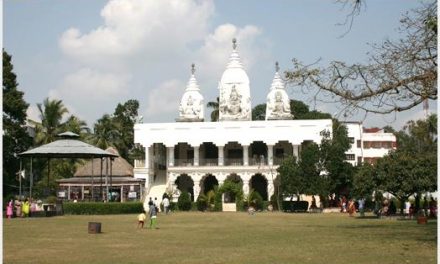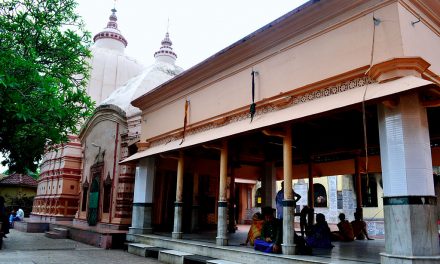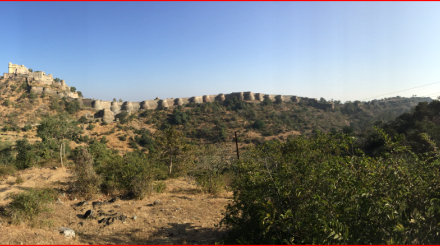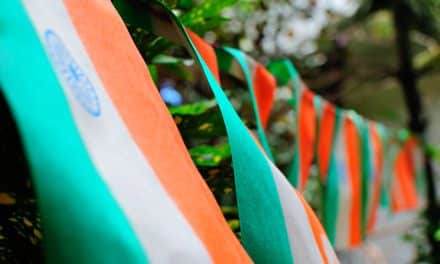For four centuries, Palas ruled over a vast area which is now divided into Indian states of West Bengal, Bihar, Odisha, Assam and People’s Republic of Bangladesh. It’s all started after the demise of the great king Shashanka of Gauda dynasty in 625 CE. At around 730 CE, King of Pundra was killed by Shaila Dynasty. King of Magadha and Gaduda was killed by Yasovarma the King of Kanauj around 750 CE. Later on, Lalitaditya of Kashmir defeated Yashovarma and invaded Bengal. The social and political structure of the region was devastated. Law and order wholly deteriorated; local chieftains were either fighting for kingship or over petty differences.
The Bengal fell apart into various tiny states. In contemporary scripts and poems, this horrible condition was stated as ‘ Matsya Nyaya’ aka the ‘Law of Fish’ ( i.e. a situation in which the big fishes prey on the smaller ones.). The Tibetan Lama, Taranath described that time of Bengal as “There was no ruler in fact in Bengal overall, rather every Kshatriya, Brahmin, Vassal and Merchant was ruling their own respective areas.
The emergence of Palas
At this stateless condition of Bengal, one dynasty emerged to take control of Bengal, named the ‘Pala Dynasty’. The exact date and time are unknown; however, many historians believe the dynasty was established by a local chieftain called Gopala (Gopala I) between 750 CE and 755 CE. It is said that after a century of anarchy, ordinary people, along with some powerful chieftains, set aside their differences and elected Gopala to rule and bring peace in the region. It is crucial to know that this was the first time a ruler was elected democratically by warring political and military entities. Regrettably not much known about Gopala and his military achievements; however, it is a fact that he brought peace and tranquillity in the region.
Palas as vanquisher
‘Pala’ means “protector” in Sanskrit. The rulers of this eminent dynasty were the followers of the’ Mahayana’ and ‘Tantrik schools of Buddhism’. Palas were known for their shrewd diplomacy and military conquests. Their army consisted of a vast number of war elephants and chariots. They had a powerful navy that they used for trading and defence in the Bay of Bengal area. Even though This dynasty’s territory was centralised mainly in Bengal and Bihar included the cities of ‘Vikrampura’, ‘Pataliputra’, ‘Gauda’, ‘Monghyr’, ‘Sompura’, ‘Ramvati'(Varendra), ‘Tamralipta’ and ‘Jaggadala’, Pala’s under Devapala attacked Northern India as well as Decan and controlled a vast amount of areas. Some historians believe that under Dharmapala, the Pala Empire had conquered lands from Kamboja modern-day Afghanistan to Bangladesh.
Palas as patrons of arts and literature
Palas were not only conquerors; they were also patrons of religions and had immensely invested in educations. Palas were one of the greatest benefactors of arts and sculpture in ancient India. “Pala School of Sculptural Art” a distinctive form of Buddism was also created during the Pala period. They built grand temples and monasteries, one of such iconic monastery is Somapura Mahavihara the Buddhist complex of Paharpur which is now in Rajshahi district of Bangladesh. There were numerous Buddhists monasteries which became prosperous during Pala dynasty; such as Vikramsila, Odantapuri, Nalanda, Jagaddala, Devikot, Bhasu, Nandadirghika, Traikutaka etc.
The Proto-Bangla language was born during the time of Palas. Charyapada the Buddhist text was the earliest form of Bangla language. The great epic Ramacharitram was written by Sandhyakar Nandi the court poet of Madanapala. Bengali Buddhist Atisha Dipankar Sriggan a Palan, is a celebrated figure amongst the Tibetian people. His teachings, known as Bodhichitta (Mind training), is revered around the world today. Another great Palan was Tilopa who developed Mahamudra method.
The Pala rulers enjoyed cordial relationship with the Srivijaya Empire, the Tibetan Empire, Sailendra Empire of Java and the Arab Abbasid Caliphate. The mathematical and astronomical inventions of the Indians benefited the middle-east during the tenure of the Pala ruling.
Like many other dynasties, the Pala dynasty did not survive the ravages of time, but their greatest works survived. Today Pala legacy is neither remembered in India nor in Bangladesh, but they are celebrated in Tibet; Perhaps due to their contribution towards Buddhism. Palas sent Buddhist Bhikkus(monks) to Nepal, Bhutan, Tibet to Myanmar, Sumatra, Java, which helped Buddhism flourish in today’s Southeast Asia. The Pala period is known as the golden era of Bengali history.
Image courtesy: Mrityunjay
















